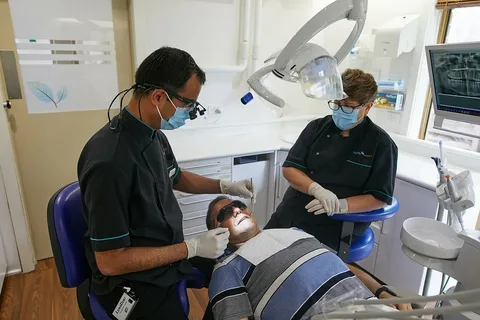Sri Lanka, famous for its breathtaking scenery and rich cultural history, has inspired travelers around the world for some time. Situated in the Indian Ocean, this island nation tempts with a combination of tropical beaches, ancient sites, tea plantations, and bustling cities. It has an array of experiences to suit everyone, from adventurous backpackers to families on holiday.
Before all this, the first important step for every international traveler is to understand the entry procedure. Applying for a Sri Lanka visa may seem like a trivial detail, but it is also the start of your exploration of everything Sri Lanka has to offer. Knowing the requirements, fees, processing times, and everything related to the visa application process can not only help you plan but can also help save you a lot of unnecessary hassle once you start your travel experience.
Why the Visa Process Matters
A tourist visa does not simply represent another stamp in your passport; it is an assurance that you have a legal basis for entering the country, the allowed duration of stay, and the activities permitted while in Sri Lanka. Familiarizing yourself with the process is such an important undertaking, as it greatly reduces unnecessary risk, such as being turned away for entry at the airport or experiencing delays that disrupt the travel experience.
Tourists frequently do not realize how small details, such as passport validity, the type of entry visa selected, or supporting documentation, can either entice or hinder the approval process. Planning provides visitors with a little more assurance that undertaking the journey will not be a very cumbersome experience.
Tourist Visa Categories
Depending on the purpose, Sri Lanka has different visa options to consider when travelling; however, the most frequently available for a leisure trip is a tourist visa. This is typically acquired under the Electronic Travel Authorisation (ETA) system, which has been introduced to expedite entry into Sri Lanka by eliminating the time-consuming process of visiting an embassy to apply.
Here is a list of the most common tourist entry permits:
- Single-Entry Tourist Visa: Allows for one entry and typically provides permission for up to 30 days’ stay within Sri Lanka.
- Double-Entry Tourist Visa: Allows for two entries into Sri Lanka, potentially beneficial for a traveller seeking an additional trip to a nearby tourist area before returning to Sri Lanka.
- Multiple-Entry Visa: Suitable for frequent travellers; however, it is less likely for short-term tourists to apply.
The ETA provides the initial allowance of 30 days’ stay; however, an extension can be provided for up to 90 days, if required.
Essential Requirements
When seeking a tourist visa, travelers should be sure they meet the following requirements:
- Passport Validity: Passport must be valid for at least six months past the date of arrival.
- Return or Onward Ticket: Proof of planned departure is often requested.
- Reservation of Dwelling: Proof of where you will be living (for example, a hotel reservation or a host).
- Proof of Financial Means: Proof of funds to pay for your time there.
- Completed ETA Form: Accurate details must be entered online to avoid being rejected or held up.
Fees Explained
The expense for securing a visa as a tourist in Sri Lanka differs depending on nationality, how the application is made, and the type of entry. In most cases, visa fees average between USD 20 to USD 50.
- For an Electronic Travel Authorization application online, it tends to be the most affordable and easiest to complete.
- Visas on Arrival may also involve a slightly higher fee, but there will be an undetermined wait time at the airport.
- Extensions may be possible, but there will be another charge if travelers wish to extend their stay beyond the 30 days first granted.
It’s also useful to note that a service provider may charge additional fees to handle the application. Make sure to check that a provider is reputable before paying anything.
Processing Time
The efficiency of the ETA system is one of its major benefits. Overall, however:
Online Application: Normally takes about 24 to 48 hours to process.
Visa on Arrival: Depending on the queue at the airport, especially during busy tourist seasons, it may take a while to receive your visa.
To reduce risk, it is advised to apply at least a week before your planned journey. Moreover, applying early gives you a buffer in case of mistakes, or if additional documents are required, you can get them expedited.
Step-by-Step Application Guide
To clarify, the process for completing the ETA Application is as follows:
- Access the ETA Official Website: Go to the Government’s authorized website.
- Complete the Online Form: Enter all the relevant information, including name, nationality, passport number, dates of travel, as well as your place of accommodation.
- Pay the Fee Online: You can pay via secure credit/debit cards.
- Receive Confirmation: Within 24 — 48 hours, the applicant’s approval will be sent via email.
- Print or save the ETA: It is recommended to have a copy upon arrival to show at immigration.
Common Mistakes to Avoid
While the process is simple, minor mistakes can create unwarranted problems. Common mistakes include:
– Using the wrong passport number or travel dates.
– Forgetting to check passport validity.
– Applying too close to the departure date.
– Completely relying on visa-on-arrival during busy times.
Steering clear of these issues will make for a more peaceful start to your travel plans.
Practical Travel Tips Linked to the Visa
- Keep Copies: Have both a digital and printed copy of the ETA.
- Know Your Length: The ETA lasts for a maximum of 30 days to start, but can be extended.
- Obey Local Laws: The tourist visa is for pleasurable activities but not for work.
- Apply for an Extension Early: Consider applying for an extension well in advance of your visa expiry, if necessary.
Conclusion
While applying for a Sri Lanka visa might feel like a small part of travel planning, it is a big part of your whole trip. Understanding requirements, keeping up with fees, and applying at the correct time will all lessen unnecessary stress. This allows you to focus more on planning your dreams, whether it’s kahunaing ancient cities like Anuradhapura, trekking in the hills of Ella, or unreal sunsets at the beaches of Unawatuna. In the current climate of travel, many visitors want to be made a little less uneasy as they navigate any formalities safely. Therefore, in between trip planning, a credible source of information, such as OneVasco, helps to shed light on your source. When hard details are handled with surety, we all just engage in the enjoyment of Sri Lanka without worrying overly about the technicalities.








